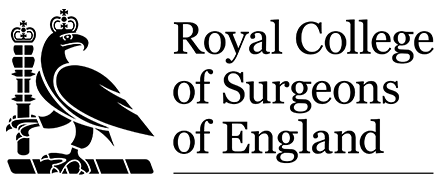Cards and camaraderie
06 Nov 2025
Georgina Thompson
Within the College archive are the attendance books of The Western Friendly Medical Club, formed in 1862 for the purpose of “establishing and maintaining a sociable and convivial intercourse amongst its’ members”.
The Club had 12 members and met on the first and third Monday evenings of the month from October to April. The members agreed a number of resolutions, including “That Whist be played from eight until eleven o’clock, after which no rubber [a series of games or hands] is to be commenced under a penalty of five shillings” and “That tea and coffee be handed round at 8 o’clock, biscuits and wine at 9, and that the supper consist of Sandwiches, Oysters, Ham or Tongue, Salad - with or without a Lobster, Wine and Cup. For any other dishes a fine of 5s.”
Amongst the founding members were T. B. Curling, Charles Hawkins and H. Spencer Smith, all of whom were original fellows of the College – the new Charter in 1843 had required the election of 300 fellows within six months and a further 300 within the following year, further entry then being decided by examination. All the original elected fellows were surgeons who had been practising for a long time and were considered experts in their field.
An attendance book was kept for the Club showing the date of each meeting and the names of members and visitors present. Many of the pages are beautifully illustrated, presumably by the members, their friends or even artists employed for the specific purpose. Interspersed through these drawings and doodles are snippets of history, commemorated in pencil and ink drawings. A selection of these are included here:
“On the Cards”:
1869: A picture entitled “‘On the cards’ A sequence of the Degree in Medicine for Ladies”, presumably inspired by the case of the Edinburgh Seven – the first matriculated undergraduate female students at a British university who began studying medicine at the University of Edinburgh in 1869. The women were not allowed to graduate or qualify, but their campaign gained significant attention and eventually led to the UK Medical Act of 1876 which granted women the right to be licensed to practice medicine, although not obliging medical schools to admit them. The picture in the attendance book appears less than supportive of the prospect – seeming to suggest that female doctors will be a significant distraction for their male counterparts.
Spanish Restoration:
1875: A colour picture from January 1875 commemorates the Restoration in Spain, whereby the First Spanish Republic ended following a coup by General Arsenio Martinez Campos in December 1874. The monarchy was restored under Alfonso XII.
The Land League:
1881: A picture entitled “Ireland under the Land League”, which suggests lawlessness in Ireland. The League was an Irish political organisation which worked to organise tenant farmers in a fight for “Fair Rent, Fixity of Tenure and Free Sale”. The League discouraged violence, but landlords' moves to evict their tenants often led to violent scenes.
Boer War:
1900: The Second Anglo-Boer war is the focus of this drawing, and given the date of February of 1900, it was likely inspired by the Battle of Paardeberg. Whilst the British did eventually win this Battle, with Cronje surrendering on the 27th February, they suffered heavy losses which many put down to Lord Kitchener’s insistence on direct attacks that had already proved costly in previous battles.
The North Sea Incident:
1904: This cartoon memorialises the “North Sea Incident” of 1904, at the height of the Russo-Japanese war. On the night of the 21-22 October ships from the Russian Baltic Fleet at Dogger Bank fired on unarmed trawlers from Hull, after mistaking them for Japanese torpedo boats. Three British fishermen died and two Russian sailors (their deaths the result of Russian ships exchanging fire in the confusion). The threat of an Anglo-Russian war because of the incident was only averted when the Russians agreed to an independent enquiry.
Women’s Suffrage:
1906: This cartoon reflects the increasingly vocal women’s suffrage movement – and, it would appear, the club’s members’ desire to keep the door firmly closed on it. The first march held in London to demand the right to vote for women in the United Kingdom had taken place in February of 1906, organised by the Women’s Social and Political Union. Electoral Equality was only achieved in 1928.
Anglo-German Friendship:
1913: A colour painting celebrating Anglo-German friendship, in recognition of the Western Friendly Medical Club meeting having taken place at the German Athenaeum in Stratford Place. “Prosit”, written at the bottom of the painting, is a German toast meaning “Your health”. The Athenaeum was founded in 1869 by German artists and writers and held regular lectures, concerts and exhibitions with the aim of establishing networks of relationships. The club had to close in September 1914 due to strong anti-German sentiment following the start of the First World War.
The pictures above are just a small example of the illustrations contained in the Club books. We have focused here on some of the historically significant images, but there is plenty to enjoy in the books, from caricatures to beautiful watercolours. From 1914 onwards no illustrations are included in the pages of the books, and the meetings became more sporadic. The Club wound up its activities and donated its possessions to the Royal College of Surgeons of England in 1952.
Some other examples of art from these books were included in an earlier blog post.
If you are interested in researching these items please get in touch.
Georgina Thompson, Assistant Archivist.







